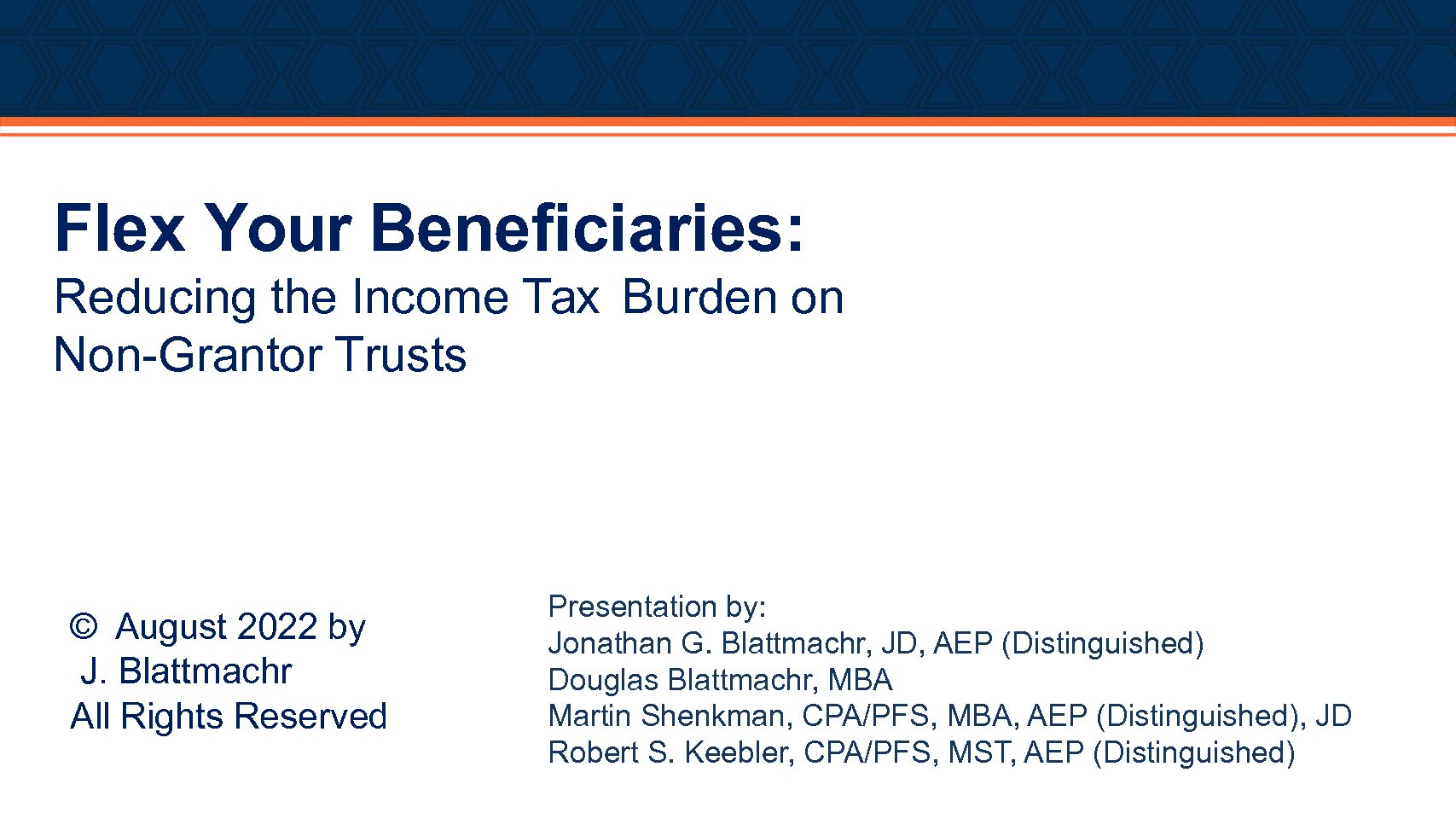Shenkman Law

Flex Your Beneficiaries: Reducing the Income Tax Burden on Non-Grantor Trusts
Trusts are subject to compressed tax rates reaching the maximum income tax brackets at only about $14,000 of income. But trusts can provide, if structured and administered to do so, significant income tax planning opportunities to save state and/or federal income taxes. One approach is to add to the trust instrument a broader array of beneficiaries. Adding a broader array of beneficiaries can be discretionary and may facilitate income tax reduction and more. The “flexible” beneficiaries don’t have to be used if incorporated into a trust, but may be used in the future if, when and as appropriate.
If you choose to distribute all income every year to an individual beneficiary, the Flexible Beneficiary Trust format may not help much. But in many if not most trusts simply distributing all trust income is not optimal, Because distributing all income negates income tax planning and asset protection planning.
Introducing different types of beneficiaries, that might be deemed to have received the income so it is “taxable” to them, may save income tax at the trust level. This will also permit tax benefits without forcing distributions to actually be made to beneficiaries so it can facilitate protecting beneficiaries from loss of governmental benefits and creditor claims.
This webinar will explore in some depth many of the planning options to enhance non-grantor or complex trusts as income tax planning tools.
Speakers: Jonathan G. Blattmachr, Esq., and Martin Shenkman, Esq.
*There are no professional advancement credits (CPE, CLE, etc.) offered for viewing this webinar.
*This may constitute attorney advertising.